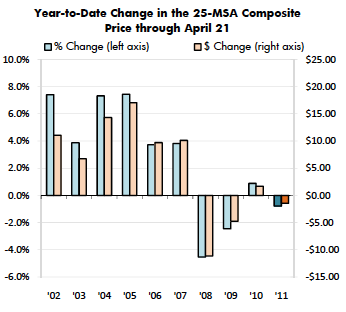Affordability is a little bit of a sticky topic. Realize that a house doesn’t need to be affordable by the median income to be saleable, it just needs to be affordable for it’s single buyer. But this leads to a bit of a catch-22, how can these new homes be “unaffordable” if they have clearly all been sold and are currently occupied. They certainly must have been affordable by someone. Less affordable to the median buyer? Sure, but does that really matter at all? Crux of the problem is that in all of this is the assumption that the median buyer should be able to afford a home. Says who, and why? Restricting development through larger lot sizes and environmental restriction will constrain supply, and with that cause rising prices. From a development perspective, it’s building that first square foot which is the most expensive, after which the marginal cost per square foot falls off dramatically. It pays for builders to build very large houses, as long as they’ve got buyers (which they do).
So again, what is affordability? Are we talking about an economic issue here or a moral one (right to the American Dream)?
From the Record:
Big homes, big lots making N.J. even more unaffordable
New Jersey’s problem with suburban sprawl is getting worse, according to a new report.
Development of big homes on big lots and zoning that favors businesses have made it tougher for lower-income residents to afford to live in higher-income suburban towns today than it was in 1970, a study by Rowan University found.
All this occurs despite the long effort to push towns to add affordable housing and adhere to “smart growth” initiatives and zoning rules, the report says.
“Municipalities are making it almost impossible to build apartments and town houses that are affordable to middle-class New Jerseyans,” said Adam Gordon, spokesman for Fair Share Housing Center, which paid for the study. “Middle-class families cannot afford a 3-acre home.”
…
The report says development of large suburban lots holding just one or two homes an acre dominated the state since 1986, while the construction of more affordable apartments, town houses and smaller single-family developments tapered.Before 1986, 58 percent of residential development was in cities and already built-up suburbs. Since then, two-thirds occurred in rural and less compact areas, the report says.
The report also says municipalities have focused on industrial and commercial development, which pays tax dividends, rather than multi-unit apartments and town houses that bring in more school-age children.
“Municipalities want as few households as possible on any given piece of land,” said Tim Evans, research director for New Jersey Future, a non-partisan research group that helped produce the report.

